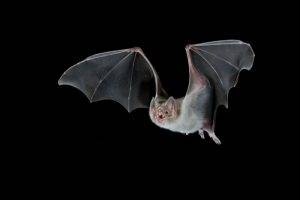The animal kingdom is a treasure trove of biodiversity, with a multitude of creatures inhabiting our planet. Among these fascinating beings, some have names that start with the letter V, making them stand out in the grand symphony of life. In this comprehensive guide, we’ll explore the world of animals from V, uncovering their unique characteristics, behaviors, and where you can encounter these captivating creatures.
Vampire Bat (Desmodus rotundus)

The Vampire Bat is perhaps one of the most iconic animals from V. These nocturnal mammals are known for their blood-feeding habits, which have earned them a fearsome reputation. However, not all vampire bats feed on blood, and they play a crucial role in their ecosystems by helping to control insect populations.
Key Characteristics:
- Small to medium-sized bats with dark brown or grayish fur
- Specialized adaptations for feeding on blood, including heat sensors on their noses
- Excellent night vision and echolocation abilities
- Often found in colonies in caves or hollow trees
Habitat: Vampire bats are primarily found in Central and South America, where they inhabit a range of habitats, from tropical rainforests to arid regions.
Where to Spot Them: To observe Vampire Bats, visit caves or roosting sites in Central and South America. These bats are typically active at night and may be spotted during their feeding flights.
Vervet Monkey (Chlorocebus pygerythrus)
The Vervet Monkey is an agile and social primate native to Africa. These monkeys are known for their striking appearance, with grayish-blue fur, a white face, and a black face mask. Vervet Monkeys are highly adaptable and can be found in a variety of habitats.
Key Characteristics:
- Grayish-blue fur with a white face and black face mask
- Long tail used for balance and communication
- Omnivorous diet, including fruits, leaves, insects, and small vertebrates
- Highly social with complex social structures
Habitat: Vervet Monkeys inhabit a wide range of habitats, including savannas, woodlands, and urban areas. They are distributed across various countries in Africa.
Where to Spot Them: Look for Vervet Monkeys in their native range in Africa, where they are often seen in troops, foraging and engaging in social interactions.
Vaquita (Phocoena sinus)

The Vaquita is one of the world’s most critically endangered marine mammals. This small porpoise is native to the Gulf of California and is known for its shy and elusive nature. With a population estimated to be fewer than 20 individuals, the Vaquita faces imminent extinction.
Key Characteristics:
- Small size, reaching up to 5 feet in length
- Grayish to dark gray coloration with distinctive dark eye rings and lips
- Shy and solitary in nature
- Feeds primarily on fish and squid
Habitat: Vaquitas are found exclusively in the northern Gulf of California, where they inhabit shallow waters near the coast.
Where to Spot Them: Unfortunately, due to their critically endangered status, spotting a Vaquita in the wild is exceptionally rare. Conservation efforts are ongoing to protect and save this species from extinction.
Vicuña (Vicugna vicugna)
The Vicuña is a graceful and slender camelid native to the high altitudes of the Andes Mountains in South America. These animals are known for their soft and valuable wool, as well as their ability to thrive in extreme environments. Vicuñas are closely related to guanacos and alpacas.
Key Characteristics:
- Slender body with long legs and a short tail
- Fine, soft wool in shades of brown, beige, or gray
- Herbivorous diet, feeding on grasses and shrubs
- Excellent adaptation to high-altitude environments
Habitat: Vicuñas are found in the Andes Mountains of South America, where they inhabit altitudes ranging from 3,200 to 4,800 meters (10,500 to 15,700 feet).
Where to Spot Them: To observe Vicuñas, visit high-altitude regions of the Andes in countries like Peru, Bolivia, and Chile. Protected areas and reserves may offer opportunities to see these graceful animals.
Velvet Worm (Onychophora)
The Velvet Worm, although not widely known, is a fascinating and ancient group of invertebrates. These soft-bodied creatures are found in humid and forested habitats, where they use a unique hunting method to capture prey. Velvet Worms are notable for their slow, deliberate movements and the secretion of adhesive slime.
Key Characteristics:
- Soft, cylindrical body covered in velvety, tuberculated skin
- Segmented body with multiple pairs of legs
- Predatory, capturing prey with adhesive slime ejected from their oral papillae
- Typically nocturnal and shy in nature
Habitat: Velvet Worms are found in tropical and subtropical regions around the world, often in damp leaf litter, rotting logs, or mossy areas.
Where to Spot Them: Due to their small size and secretive habits, encountering Velvet Worms in the wild can be challenging. They are more commonly observed in captivity or during specialized surveys.
Vulture
Vultures are a group of scavenging birds known for their crucial role in ecosystems as nature’s clean-up crew. While there are multiple species of vultures around the world, some notable ones include the African White-backed Vulture (Gyps africanus), the Turkey Vulture (Cathartes aura) in North America, and the Indian Vulture (Gyps indicus) in South Asia.
Key Characteristics:
- Large birds with bald heads and strong beaks for scavenging
- Excellent soaring capabilities and keen eyesight for spotting carrion
- Play a vital role in cleaning up carcasses and preventing the spread of disease
- Highly social, often gathering at feeding sites
Habitat: Vultures are found in a variety of habitats, including grasslands, deserts, forests, and urban areas. They are often associated with open landscapes where they can spot carrion from the air.
Where to Spot Them: Depending on the species, vultures can be found on every continent except Antarctica. Look for them soaring high in the sky or congregating around carcasses in suitable habitats.
Frequently Asked Questions (FAQs)
Now that we’ve explored animals from V, let’s address some common questions about these captivating creatures.
Why are Vampire Bats called “vampires”?
Vampire Bats are called “vampires” due to their unique feeding behavior, where they feed on the blood of other animals. This blood-feeding adaptation has earned them their spooky nickname.
Are there any other species of animals that start with the letter V?
Yes, there are many other species of animals that start with the letter V, including vipers, vultures, vervain hummingbirds, and velvet ants, to name a few.
What are the conservation status and threats to Vaquitas?
Vaquitas are critically endangered primarily due to bycatch in gillnets used by illegal fishing operations. Habitat destruction and pollution in their limited range also pose threats to their survival. Conservation efforts are focused on reducing bycatch and protecting their habitat.
How can I help conserve these animals?
You can contribute to the conservation of these animals by supporting organizations and initiatives dedicated to their protection. Additionally, spreading awareness about the importance of conserving biodiversity and their habitats can make a significant difference.
Are Velvet Worms venomous?
While Velvet Worms are not venomous, they use a unique hunting strategy by squirting adhesive slime to capture prey. This slime immobilizes their prey, making it easier for them to feed.
Do vultures play a role in disease control?
Yes, vultures play a crucial role in disease control by quickly consuming carrion and preventing the spread of pathogens. Their stomach acid is highly acidic, killing many harmful bacteria and viruses.
Related Post:
Why Do Some Countries Choose a Red and White Flag? Symbolism Unveiled
Where Can You Spot 7 Stunning Red-Beaked Birds in the Wild?
Reinvent Yourself: How to Upgrade Your Lifestyle With Fashion
Animals from V represent a diverse array of creatures, each with its unique adaptations and ecological roles. From the formidable Vampire Bat to the delicate Velvet Worm, these animals contribute to the rich tapestry of life on Earth. As we continue to explore and appreciate the wonders of the natural world, let’s also strive to protect and conserve these remarkable species and their habitats for generations to come.

